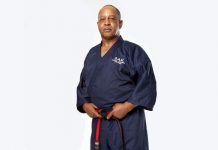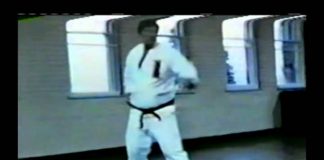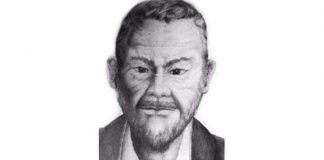Ronald McNair was born on October 21, 1950, in Lake City, South Carolina. He became an MIT-trained physicist who specialized in laser research before joining NASA in the late 1970s. In February 1984, he became just the second African American to reach space, serving as a mission specialist aboard the Space Shuttle Challenger. On January 28, 1986, he was one of the seven crew members killed when the Challenger shockingly exploded 73 seconds after liftoff.
The second of three boys born to Carl, a mechanic, and Pearl, a teacher, McNair displayed an early aptitude for technical matters, earning the nickname “Gizmo.”
Ronald McNair became interested in space by the launch of the Russian satellite Sputnik in 1957, and boosted by the appearance of Star Trek on TV years later, its multi-ethnic cast pushing the boundaries of what was possible for a small-town African-American boy.
An outstanding all-around student at Carver High School, McNair starred in baseball, basketball and football and played saxophone for the school band. He graduated as valedictorian of the class of 1967, earning a scholarship to attend North Carolina Agricultural and Technical State University.
Education and Early Career
After initially considering majoring in music at NC A&T, Ronald McNair eventually came back around to his love for science, graduating magna cum laude in 1971 with a B.S. in physics.
From there, it was on to the Massachusetts Institute of Technology as a Ford Foundation fellow. Adjusting to the new environment proved a challenge for McNair, who came from a historically black undergraduate school. He later faced a potentially career-altering obstacle when two years of specialized laser physics research for his doctorate was stolen, but he managed to produce a second set of data in a year, and earned his Ph.D in physics in 1976.
By this point, Ronald McNair was a recognized expert in the fields of chemical and high-pressure lasers. He went to work for Hughes Research Laboratories in Malibu, California, where he focused on such tasks as the development of lasers for isotope separation and conducted research on electro-optic modulation for satellite space communications.
Musician and Martial Artist
Ronald McNair, who played saxophone for a band during college, maintained his love for the instrument throughout his life. He was famously photographed playing his sax during his first mission to space in 1984.
Additionally, the accomplished physicist and astronaut was highly skilled in karate. He won the 1976 AAU Karate Gold Medal and five regional championships, eventually achieving the rank of fifth-degree Black Belt.
Organizations and Honors
Ronald McNair was a member of several organizations during his professional career, including the American Association for the Advancement of Science, the American Physical Society and the North Carolina School of Science and Mathematics Board of Trustees.
Among his many honors, he was named a Distinguished National Scientist by the National Society of Black Professional Engineers in 1979 and received the Friend of Freedom Award 1981. He also garnered honorary doctorates from NC A&T State University, Morris College and the University of South Carolina.
In 2004, Ronald McNair and the rest of his Challenger crew members were posthumously honored with the Congressional Space Medal of Honor by President George W. Bush.
Legacy
Ronald McNair has a legacy that endures through the various educational initiatives and programs that bear his name. Founded in 1996, the Dr. Ronald E. McNair Educational Science Literacy Foundation (DREME) encourages students from kindergarten through college in areas of STEM learning. Additionally, the U.S. Department of Education’s Ronald E. McNair Postbaccalaureate Achievement Program provides grants to promising students from disadvantaged backgrounds.
Ronald McNair has accomplishments that also influenced the following generations of African Americans who learned to dream big. His admirers include astrophysicist Neil deGrasse Tyson, another world-renowned intellect who found fulfillment via contact sports as a high school wrestler.
“An astronaut who was also a Black Belt in karate served as a kind of affirmation that an athletic hobby need not interfere with academic pursuits,” Tyson told the New York Daily News.
Source: Biography






